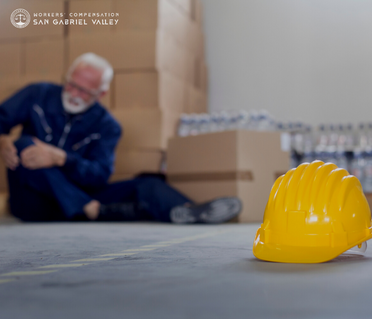The nation’s employers incur more than $13 billion in direct costs each year as a result of workplace lifting injuries, according to the Bureau of Labor Statistics. Lifting injuries are also the second leading cause of workers’ compensation claims, accounting for more than 20 percent of all claims.
Despite these high costs, many employers remain unaware of the potential risks associated with workplace lifting injuries. This is particularly true in small businesses, where the employer may not have the time or resources to devote to safety training and education.
Fortunately, there are a number of steps that employers can take to reduce the risks of workplace lifting injuries. In this article, we will discuss what you need to know about workplace lifting injuries and how to prevent them.
What are the Most Common Lifting Injuries at Work?
There are four main types of lifting injuries that occur in the workplace:
- Musculoskeletal disorders (MSD): MSD refers to a variety of conditions that can result from lifting heavy objects, such as hernias, disc herniation, and rotator cuff tears.
- Sprains and strains: Sprains and strains are among the most common lifting injuries, accounting for more than 50 percent of all workplace-lifting injuries. These injuries occur when the muscles or ligaments are stretched or torn.
- Joint injuries: Joint injuries are another common type of lifting injury. They occur when the joints are subjected to too much stress, resulting in joint pain, inflammation, and damage to the cartilage.
- Back injuries: Finally, back injuries are the most common type of lifting injury, accounting for more than 70 percent of all workplace-lifting injuries. These injuries can range from mild to severe, and they often result in chronic pain and disability.
What Causes Workplace Lifting Injuries?
There are many factors that can contribute to workplace lifting injuries, including:
- One of the most common causes of workplace lifting injuries is poor lifting technique. Many people do not know how to lift heavy objects safely, and as a result, they end up injuring themselves.
- Another common cause of workplace lifting injurie is lifting too much weight. This can happen when people try to lift objects that are too heavy for them, or when they lift objects that are too big for their body size.
- Lifting objects that are awkwardly shaped can also lead to lifting injuries. This is because the objects can shift and cause the person to lose their balance, leading to a fall.
- Finally, not using proper safety equipment can also contribute to lifting injuries. This includes not using gloves, not using a lifting belt, and not using a dolly.
How can you Prevent Lifting Injuries at Work?
- One of the most important steps that employers can take to prevent workplace lifting injurie is to create a lifting policy. This policy should outline the proper lifting techniques that employees should use. It should also specify the maximum weight that employees are allowed to lift.
- Providing lifting training is another important step that employers can take to prevent workplace lifting injurie. This training should teach employees how to lift heavy objects safely. It should also teach them how to use the proper safety equipment.
- Implementing an ergonomic program is another key step in preventing workplace lifting injuries. This program should identify the hazards in the workplace and recommend changes that can be made to reduce the risk of injuries.
- Conducting regular safety audits is also important in preventing workplace lifting injuries. These audits should identify hazards in the workplace and make recommendations for corrective action.
- Finally, employers should provide proper safety equipment to their employees. This equipment should include gloves, lifting belts, and dollies.
Workplace Lifting Injuries and Workers’ Compensation
If you have been injured while lifting something at work, you may be entitled to workers’ compensation benefits. These benefits can help you cover your medical expenses and lost wages.
- To get workers’ compensation benefits, you will need to file a claim with your employer.
- Your employer will then submit the claim to their workers’ compensation insurance carrier.
- The insurance carrier will then review your claim and decide whether or not to approve it.
- If your claim is approved, you will receive benefits that will cover your medical expenses and a portion of your lost wages.
- If your claim is denied, you can appeal the decision.
If you have been injured while lifting something at work, it is important to seek medical attention right away. Once a doctor has seen you, you should then contact an experienced workers’ compensation attorney. A workers’ compensation attorney can help you navigate the workers’ compensation system and get the benefits you deserve.
Contact the Experts
Lifting injuries are one of the most common types of workplace injuries. They can be caused by a variety of factors, including poor lifting technique, lifting heavy objects, and repetitive lifting. If you have been injured at work, it is important to contact our experienced workers’ compensation attorney at 626-602-9483. At San Gabriel Valley Workers’ Compensation Attorney, we can help you get the benefits you deserve.



